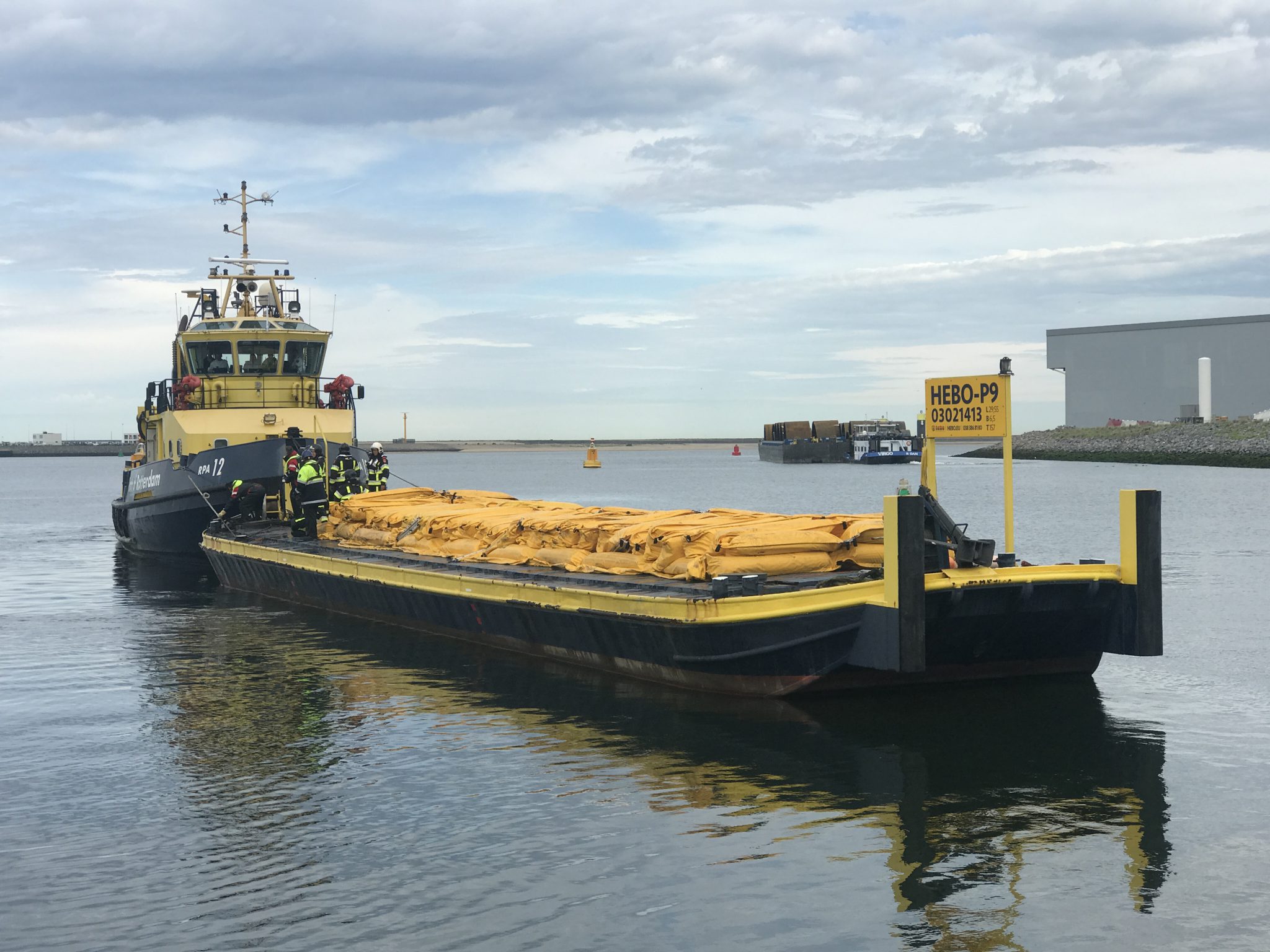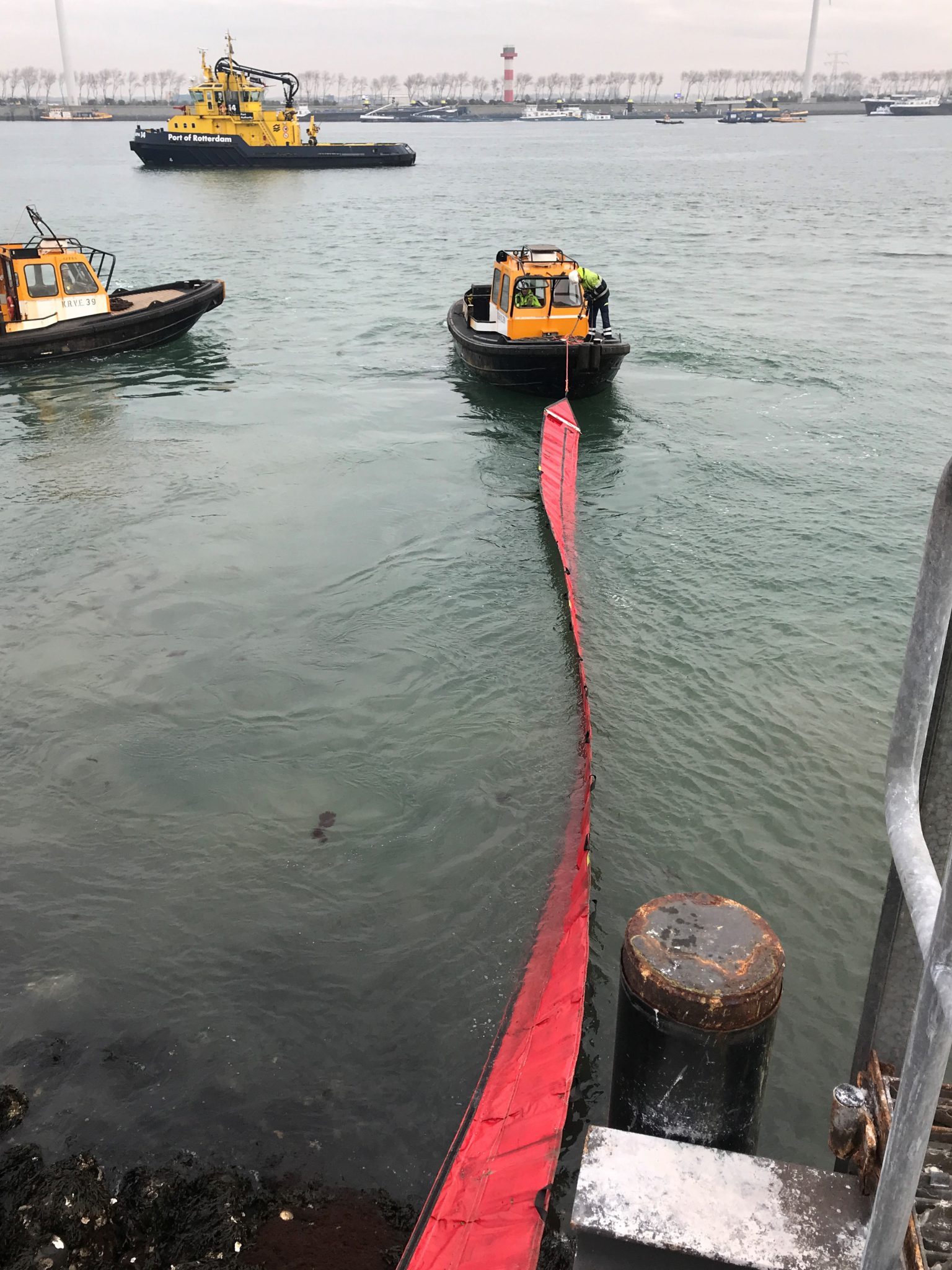Deployment and positioning of an oilboom
Deployment and positioning of an oilboom is a core activity of the Harbour Master’s Division (DHMR) patrol vessels. The patrol vessels’ horsepower and dimensions, however, mean they are less suited to moving and installing the booms. The Koninklijke Roeiers Vereeniging Eendracht (KRVE) vessels are more suitable for this. That is why the DHMR has agreed with the KRVE that the KRVE will move and install the booms in the event of a spill, under the responsibility of the Officier van Dienst DHMR (OvD-DHMR). An exception to this agreement involves spills in which it is necessary to use breathing apparatus. For these spills the booms are moved and installed by the DHMR patrol vessels.
Operational procedure
The processes relating to the operational handling of spills are recorded in the Samenwerkingsprocedure Afhandeling Morsingen (SAM) and the Deltalinqs “Rodeboek”.
The SAM applies to the port basins and other waters managed by the Port of Rotterdam Authority, located to the west of the Beneluxtunnel. Rijkswaterstaat and the Water Boards are responsible respectively for the oil spill response for the national waterways and the waterways inside the dikes.
The DHMR Officer in Charge is responsible for managing the oil spill response. The DHMR Officer in Charge is also responsible for starting or ending the SRH response and the SAM.
The operational procedure is as follows:
- 1.Reporting
A spill is in principle reported via the Central Incident Number (CIN). If, following an initial assessment of a report, it becomes apparent that there is a need for a coordinated oil spill response, the Samenwerkingsprocedure Afhandeling Morsingen (SAM) can be started and the response team formed. Only the DHMR Officer in Charge is authorised to start and end the SAM. All reports relating to starting or ending the SAM run via the Duty Officer at the DHMR Harbour Coordination Centre (HCC). - 2.Response
The DHMR Officer in Charge is responsible for operational leadership and management of the response to the spill and makes decisions on the use the SHR oil containment booms. If necessary or desirable, the DHMR Officer in Charge will form a response team, comprising representatives of the involved parties. The objective is to combine knowledge when responding to a spill. The DHMR Officer in Charge acts as manager of the response team. An oil spill response Action Plan is formulated, and this is approved by the DHMR Officer in Charge. - 3.Ending the activities
The response organisation reports to the DHMR Officer in Charge that the surface water and/or the objects that need to be cleaned are ‘clean’ and that the activities can be stopped. The DHMR Officer in Charge is responsible for assessing the result of the activities. Based on this, the DHMR Officer in Charge can decide to end the SAM.


